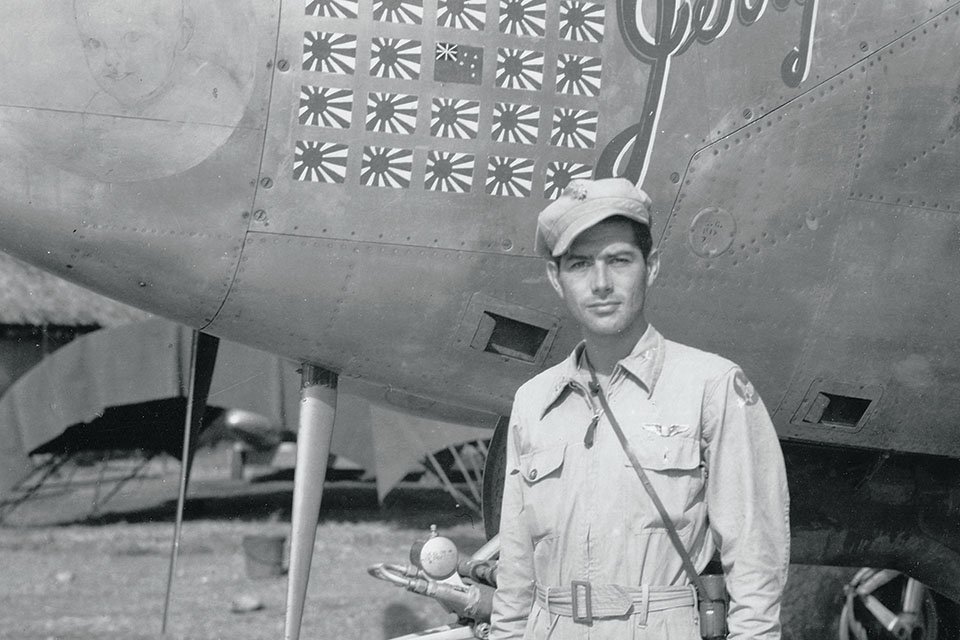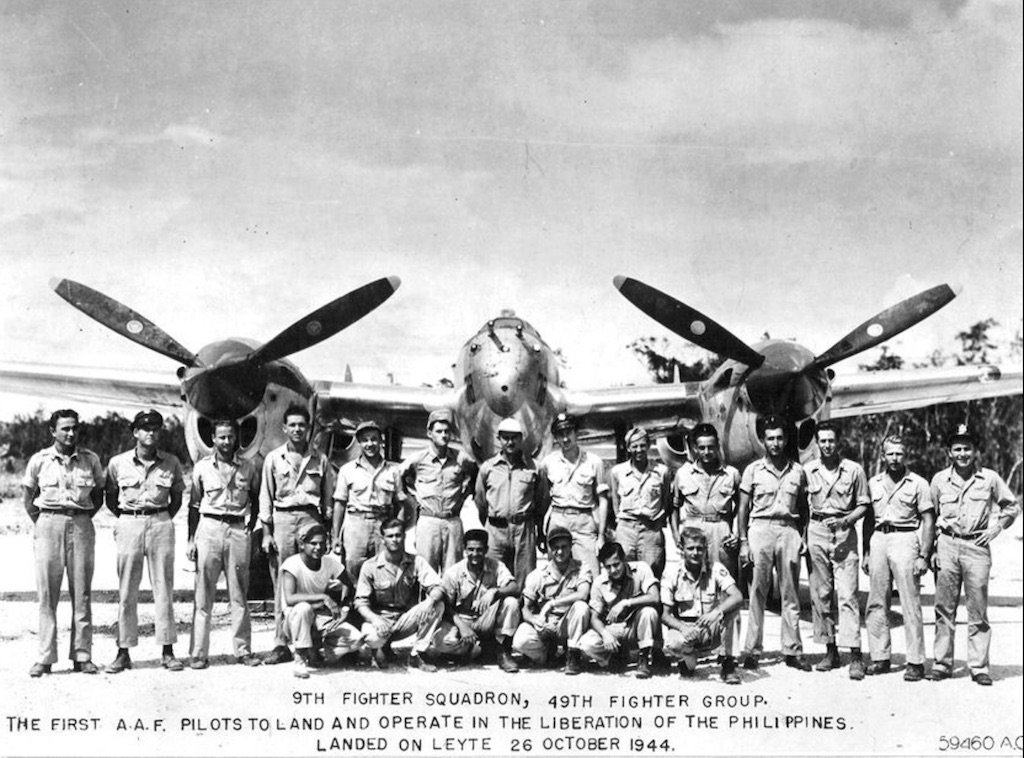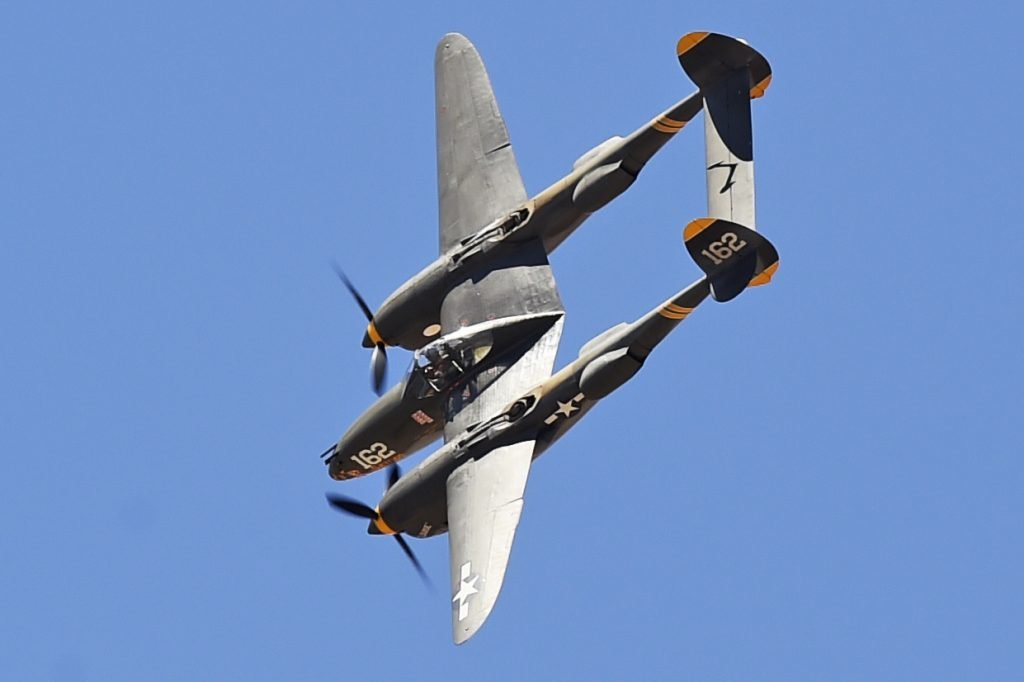This Fighter Pilot Shot Down More Than 20 Enemy Aircraft, Earning the Title ‘Quad Jungle Ace’

Johnson later added an Australian flag to the 20 Japanese flags that would eventually decorate the nacelle of his p-38 Lightning. (P-38 National Association)
Sitting in the driver’s seat with his foot on the gas, Major Gerald “Jerry” Johnson drove to the Alert Tent in the early morning hours of Oct. 13, 1943, as jeeps carrying other pilots from the 9th Fighter Squadron, 49th Fighter Group, Fifth Air Force trailed in a column behind. On his mind were the names of other pilots who were lost in a mission the night before, friends of his with whom he had shared pancakes in the mornings and gambled his valuables away in late-night poker games. They were briefed on the mission and sat around for hours in boredom at Horanda Air Field, a large stretch of land that was formerly just another patch in the New Guinea jungle.
When Johnson and his squadron of eight P-38 Lightnings were alerted, they took to the air to intercept a massive aerial convoy of 18 dive bombers supported by 20 agile fighters. They were outnumbered and outgunned, but Johnson wasn’t entirely concerned about that as all he could focus on was reaching the enemy before they dropped their payload over Oro Bay, an advanced military shipping installation.

As his plane climbed through the clouds, the bombers came closer into his sights. He maneuvered his aircraft and issued orders over the radio to communicate their approach. The Japanese were unaware that they were being trailed in the air when Johnson and his squadron ambushed the enemy, walking his rounds from the nose of the aircraft into one of the dive bombers, igniting the plane’s fuselage.
Black smoke and a flash of flames burst through the plane’s side as the bomber plummeted out of the sky. The Japanese zeros peeled off, and an all-out dogfight ensued. On numerous passes, Johnson evaded the tracers shot by Japanese fighters, diving and climbing, rolling and tilting before his rounds struck and downed a second enemy bomber. Their surprise attack netted him three aerial victories, two bombers and one enemy fighter, a solid day’s work that impeded the enemy formation from reaching its target.

The large enemy force diverted away from their intended target as Johnson’s small but ferocious display of aerial finesse surprised and overwhelmed the Japanese. For his actions on this day he was awarded his first of two Distinguished Service Crosses. In his following tours, Johnson was a nightmare for the Japanese in the Pacific, earning 22 aerial victories with 21 probables to secure his status as a quadruple ace (five aerial victories are required to achieve “ace” status).
Sadly, while on a courier mission after the war, the B-17 or B-25 he was in entered severe weather, and a violent mixture of rain, lightning, and turbulence knocked out all radio communications. One of the passengers neglected to bring along a parachute, and knowing the consequences of giving up his own, Johnson handed it to the passenger, who then bailed out of the plane. Everyone with a parachute was rescued and survived, while Johnson fought with the controls until he perished. Accounts vary as to whether he was the pilot or a passenger on the plane.
Johnson’s remains were lost with the rest of the aircraft. Since he wasn’t on a combat mission, his heroic last act on Oct. 7, 1945, did not warrant a posthumous Purple Heart; however, he was awarded the Soldier’s Medal for heroism at the risk of life in a non-combat-related incident. A hero in the sky even on his final flight. Gerald R. Johnson is sometimes confused with Gerald W. Johnson, another ace pilot during World War II, but the latter’s aerial dominance was in the European Theater and not the Pacific.

Matt Fratus is a history staff writer for Coffee or Die. He prides himself on uncovering the most fascinating tales of history by sharing them through any means of engaging storytelling. He writes for his micro-blog @LateNightHistory on Instagram, where he shares the story behind the image. He is also the host of the Late Night History podcast. When not writing about history, Matt enjoys volunteering for One More Wave and rooting for Boston sports teams.
BRCC and Bad Moon Print Press team up for an exclusive, limited-edition T-shirt design!
BRCC partners with Team Room Design for an exclusive T-shirt release!
Thirty Seconds Out has partnered with BRCC for an exclusive shirt design invoking the God of Winter.
Lucas O'Hara of Grizzly Forge has teamed up with BRCC for a badass, exclusive Shirt Club T-shirt design featuring his most popular knife and tiomahawk.
Coffee or Die sits down with one of the graphic designers behind Black Rifle Coffee's signature look and vibe.
Biden will award the Medal of Honor to a Vietnam War Army helicopter pilot who risked his life to save a reconnaissance team from almost certain death.
Ever wonder how much Jack Mandaville would f*ck sh*t up if he went back in time? The American Revolution didn't even see him coming.
A nearly 200-year-old West Point time capsule that at first appeared to yield little more than dust contains hidden treasure, the US Military Academy said.












